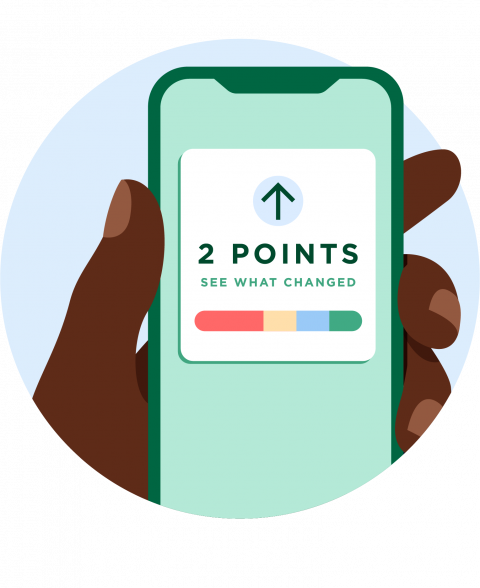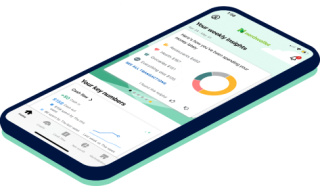How to Read a Credit Report

Many or all of the products featured here are from our partners who compensate us. This influences which products we write about and where and how the product appears on a page. However, this does not influence our evaluations. Our opinions are our own. Here is a list of our partners and here's how we make money.
Regularly reviewing your credit reports lets you check for errors that might be lowering your credit scores, and it can tip you off to potential identity theft. You can use the dispute process to get mistakes removed, which may help you qualify for credit or get better terms.
How to get your free credit report information
You can get free credit report information in two ways:
You're entitled to a free report directly from the three credit bureaus by using AnnualCreditReport.com. Reports had been available annually, but in response to the pandemic the site began offering free weekly updates.
Some personal finance websites, including NerdWallet, offer free credit report information. NerdWallet's credit report includes a credit score, providing your VantageScore 3.0 using TransUnion data, and updates weekly.
You can request your credit report in Spanish directly from each of the three major credit bureaus: · TransUnion: Call 800-916-8800. · Equifax: Visit the link or call 888-378-4329. · Experian: Click on the link or call 888-397-3742.
🤓 Consejo Nerdy Usted puede solicitar una copia de su informe crediticio (gratis y en español) de cada una de las tres principales agencias de crédito: · TransUnion: Llame al 800-916-8800. · Equifax: Visite el enlace o llame al 888-378-4329. · Experian: Haga clic en el enlace o llame al 888-397-3742.
How to read a credit report and what to look for
Each credit bureau organizes its reports differently, so the sections may fall in a different order, but all of your reports have the same basic parts. Here’s what a credit report looks like:
Personal information
Your personal information will include names you've used, current and previous addresses and phone numbers, Social Security number — partially masked for security — birthdate, and current and previous employers.
Don't be surprised if there are a few different spellings of your name. Variations you've used on credit applications will pop up, such as married and maiden name, with and without middle name or initial, the short version of your first name, etc.
If one or more of your employers or telephone numbers is missing, it’s not a big deal. But keep an eye out for addresses you don't recognize — especially if you later spot accounts you don't recognize. That suggests someone has used your personal information to open fraudulent accounts in your name. Report identity theft as soon as you discover it.
Accounts
This section lists all of your accounts that haven’t gone to collections or been defaulted on. This is the meat of your credit report.
Each account has a summary at the top. Make sure you recognize the following items:
Name and address of the creditor, account number and date opened.
Status of the account — such as whether it's open or closed or has been transferred — and whether you're current on payments. Accounts that were in good standing when pandemic-related payment accommodations began must continue to be reported as current.
Type of account (credit card, student loan, etc.).
Whether you’re an individual or joint owner of the account or simply an authorized user.
Credit limit or original amount of the installment loan.
You'll also see balance and payment information, including the date when the creditor last sent account data to the bureau. Don't expect it to reflect your balance as of today. For example, even if you pay your credit card in full every month, your report may show a balance if your card activity was reported in the middle of the billing cycle.
Make sure your payment history doesn't show errors, such as a late payment when you paid on time. You’ll also want to make sure your account limits are correct, as this can affect your credit utilization ratio — and that's a big factor in credit scores.
If an account has been closed, your report will note who closed it and when. Closed accounts in good standing can stay on your credit reports indefinitely. But accounts closed by the creditor because you didn't pay as agreed should fall off seven years after the account first went delinquent.
Negative information, if any
The negative information section will list accounts that haven't been paid as agreed, collections and public records such as bankruptcies. Negative information generally stays on your credit report for seven years, with the exception of Chapter 7 bankruptcies, which stay on your report for 10 years.
In this section, you’ll want to make sure any negative information is accurate. If you see incorrect accounts or collections or if something is being listed after it was supposed to have dropped off, dispute the entries immediately to have them removed from your report.
Inquiries on your credit
This section lists times when someone checked your credit. You’ll see inquiries when you applied for new credit or limit increases, as well as ones related to things like housing or utility applications. Entries may be separated by type:
Hard inquiries happen when you authorize a potential creditor to check your file as part of an application. These can cause a small, temporary dip in your credit scores.
Soft inquiries, which don’t affect your credit scores, happen when you check your own credit or a potential creditor sees if it wants to send you a promotional offer.
Both types of inquiries will include the name and address of the organization, as well as the date. Make sure that all hard inquiries were authorized by you and that they fall off your report after two years.

What information is not found on your credit reports?
Your credit reports do not include credit scores. However, the information the reports contain helps shape your scores. Here’s what else credit reports don’t include:
Salary
It makes a big difference in your day-to-day life, but your salary doesn't appear in your credit reports, and it doesn't affect your credit scores.
Employment status
Credit reports might list your employers, but they don’t say whether or when your employment ended. The information is for identification purposes and comes from your past credit applications.
Marital status and spouse’s credit history
You can get married, but your credit reports won’t. You and your spouse will each have separate credit reports, and his or her credit won't affect yours. But take note: Accounts you open together — a mortgage or shared credit cards, for example — do show up on both credit reports, and mistakes such as late payments could affect you both.
Assets
Your bank balances, retirement accounts such as 401(k)s, and investments or brokerage accounts aren't listed on your credit reports.
401(k) loans
When you borrow money from yourself, it doesn't appear on your credit reports. (But it’s also generally not a great idea — it can really set back your retirement saving progress.)

If you see errors, dispute them
If you spot inaccuracies that may be lowering your scores, gather documentation to back up your claim. You can dispute credit report errors with the credit bureau showing them. You'll need to provide copies of documents proving your identity and showing why the item is wrong. The bureau has 30 days to investigate and respond, although the Consumer Financial Protection Bureau has guidance extending that to 45 because of the pandemic.


